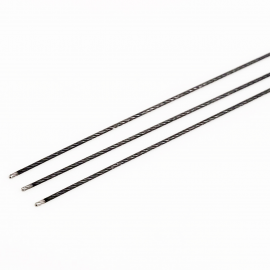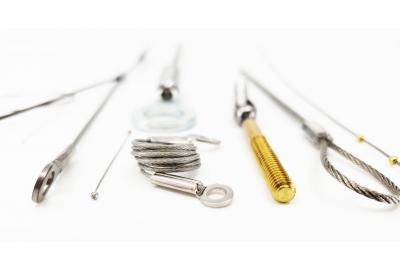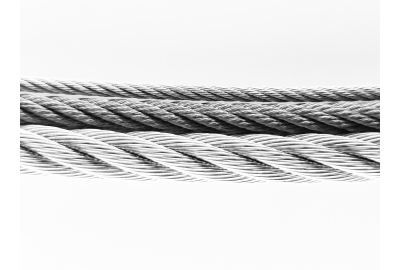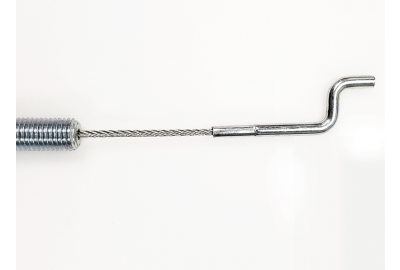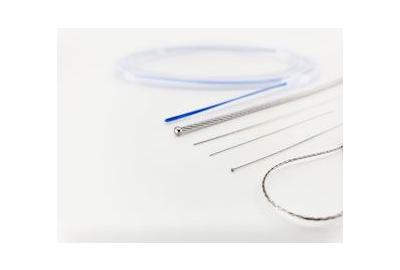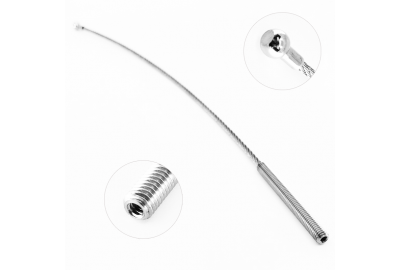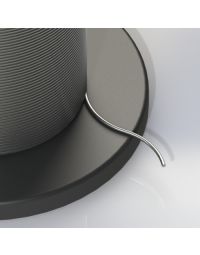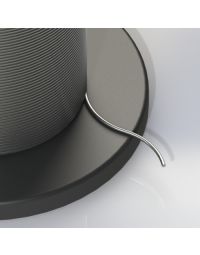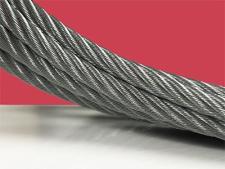Wire rope, mechanical cable or the filaments that are used to produce cable often contain slight or even dramatic deformations created during the making of the product. When cable waviness or worse, considerable bends are present, this is commonly an undesirable characteristic of the product. To achieve a desirable shape, in this case, more straightness, the cable or wire can be straightened by bending the cable past its presenting “plastic” deformation until it achieves its more desired deformation or straightness.
What is Wire Straightening?
Wire straightening is a process by which a wire rope, mechanical cable or cable filament is fed through a die and series of guides, or roll bearings, that eliminate the natural constructional curvatures present in the material.
Different Types of Wire and Cable Straightening
Wire straightening can comprise either a roller-style, consisting of a series of roll bearings or rotary straightening, requiring the use of a die and guides that suit specific straightening requirements.
Rotary Straightening
The first straightening method is also the most ideal and is known as rotary straightening. Rotary straightening involves applying a custom-made die directly to the cable itself through a series of guides that apply forces to the cable from all axises. The guides are typically made from brass carbide, ceramic or bronze. In rotary straightening, it is critical that the guides consist of a softer material than the cable itself, which protects the wire rope from what is known as “barber poling,” or surface marring of the cable. However, the guides must also be strong enough material to tolerate the wear they experience when applying forces to the cable or wire material.
The benefit of rotary straightening is that the cable is straightened by all available angles. By way of comparison, roller-style straightening can only correct one axis at a time. Rotary straightening, conversely, is always correcting all axises at all times. While more expensive and slower a process than its less precise, but the faster-paced counterpart, mechanical engineers strongly encourage rotary straightening in use cases where absolute straightness is an essential application requirement.
Roller-Style Straightening
The other popular method for straightening mechanical cable or cable wire is known as roller-style. Whereas rotary straightening is slow but exact, roller-style straightening is easy to set up, can operate in the thousands of feet of cable per minute and is less expensive.
In roller-style straightening, no die is used. The cable is fed, or “snaked” through a series of roll bearings, which removes the undesired bend in the cable material.
In roll-style straightening, the roll bearings will force the wire off of a single axis, and thus off of what is known as its “wireline.” Once this is achieved, the cable has been forced off of its presenting deformation. But the roll-style process is not done yet.
This process is repeated until all axises have been treated.
Now that the straightening process has forced the material out of its formerly undesirable shape, the roll bearings push the cable into its new, now corrected, wireline, hence straightening the cable permanently.
The benefits of roll-style straightening are many, but as is always the case, the benefits sometimes come at a cost. For instance, while less expensive a process, the added cost of rotary straightening promises a straighter product. Additionally, in roll-style straightening, engineers need lots of space to feed the cable through in order to correct all axises. In rotary alternatives, the footprint of the actual straightening equipment uses far less real estate. Not to be outdone though, roll-style straightening allows engineers to straighten far more cable in far less time too, where production time and speed to market are critical priorities. Lastly, roll-style straightening is comparatively easier to setup. So, while consuming more factory space, it is quicker to configure and thus execute, again making it both cost-effective and faster a means to achieve straightness.
Key Takeaways:
- Cable and wire straightening is a complex method by which undesired constructional and natural bends in the material are forcibly corrected to meet application requirements.
- There are two common types of cable straightening: roll-style and rotary. The former uses roll bearings to achieve straightness, and the latter a die and guides.
- Roll-style straightening may require more production space, performs at a fast pace, but yields less surgical straightness.
- Rotary straightening is slower-going, but more precise and consumes far less factory floor.
At Carl Stahl Sava Industries, our engineers are uniquely qualified to support your cable and wire straightening needs.
In need of wire straightening and cutting solutions? Contact us today with your query.

